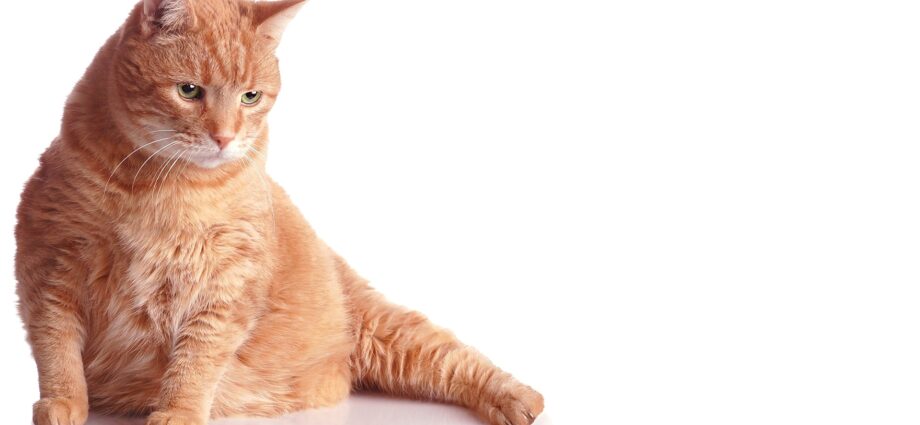Contents
Diabetes in cats: what to do for my diabetic cat?
Diabetes mellitus is a very common disease in our domestic carnivores, and especially in cats. Support can be quite complex and restrictive. It is a difficult pathology to balance, because it does not stop evolving and it therefore requires regular treatments and checks. However, with correct and rigorous management, cats’ diabetes can be stabilized or even treated successfully.
Presentation of the disease
Diabetes is an abnormality in the metabolism of complex sugars resulting in a state of persistent hyperglycemia. The elimination of excess glucose then takes place in the urine. Indeed, when the blood glucose level exceeds a certain threshold (3g / L in cats), the kidney can no longer reabsorb the glucose that escapes and it ends up in the bladder, which can then be the origin of complications such as kidney failure or urinary tract infections.
This diabetes is quite close to that of type 2 diabetes in humans: it is a state of insulin resistance, often linked to the state of overweight. At the onset of the disease, the cat is in a “pre-diabetic” state. His blood sugar level is constantly high and, little by little, the pancreas will become exhausted and the cells in the cat’s body will become resistant to insulin. The cat then ends up being unable to secrete insulin.
This insulin resistance is mainly linked, in cats, to obesity, as well as to the sedentary lifestyle and physical inactivity that often go hand in hand with it. Genetic factors can also intervene. Finally, certain treatments can intervene in the appearance of diabetes mellitus.
The frequency of diabetes in cats increases with age and it is more common in males than in females, unlike dog diabetes.
What are the symptoms ?
Cat diabetes is mainly manifested by an imbalance in drinking: the cat drinks a lot more, and therefore begins to urinate more. Sometimes the cat may even be dirty. Finally, despite a preserved or even increased appetite, the cat will tend to lose weight.
When and how to make a diagnosis?
The presence of the two previously mentioned clinical signs should prompt you to consult your veterinarian very quickly. This will measure the blood sugar level and in the urine in order to be able to establish its diagnosis. In cats, stress hyperglycemia is very common in consultation. Your veterinarian will therefore not be able to conclude that you have diabetes only with a blood test, it is mandatory to do a urinalysis. Another possibility is to measure the blood level of fructosamines, which then reflect the average blood sugar level over the past few weeks. If these are high, then the cat does indeed have diabetes.
If your cat ever shows depression, anorexia and / or vomiting, you will need to consult your veterinarian urgently because this can be a sign of complicated diabetes. It then requires urgent care and intensive care because the animal’s vital prognosis may be involved.
Treatment of diabetes in cats
The establishment of a treatment for cat diabetes will require regular and close monitoring during the first month of treatment at least to find the effective insulin dose. Then, the visits may be spaced out if your veterinarian judges this possible.
The implementation of a treatment is complex. It imposes both lifestyle and financial constraints. Indeed, the success of the treatment requires insulin injections at fixed times twice daily and every day, a stable exercise and a suitable diet: all this has a cost, in addition to being difficult to manage.
Finally, since diabetes often appears in elderly animals, it is not uncommon for the cat to present other pathologies which worsen its prognosis.
If the treatment is started early enough and is followed rigorously, then some cats can reverse their diabetes. This ability is strongly linked to the establishment of early treatment. Indeed, the shorter the chronic hyperglycemia state, the better the chances of reversibility. Diabetes is estimated to be 80% reversible in the first 6 months post-diagnosis, but more than 30% beyond.
In addition to drug treatments, it is important to closely monitor the animal’s diet. In fact, diabetes often appears in obese animals who lack exercise. A high-protein food low in complex carbohydrates is then the most suitable. The most suitable foods on the market today are “m / d Hill’s” or “diabetic” foods from Royal Canin. If the diabetes is really severe, then a household diet of all meat or fish, supplemented with suitable minerals, is then recommended. Finally, in addition to dietary measures, it will be necessary to try to introduce exercise in the life of the cat, especially if it lives in an apartment or does not have access to the outside.
Drug treatment is actually insulin therapy. Injectable insulin in a pen is most often used because it is easy to set small doses for your cat.
The fact that diabetes can be reversed implies that there is a risk of insulin overdose. Sometimes your veterinarian will have to gradually reduce the insulin dose in parallel with the control of diabetes and the evolution of blood sugar curves. Reversion usually occurs within 2 to 8 weeks of starting treatment when it occurs. This is why close monitoring is required during this period. Blood glucose curves should be done if possible at home and by the owner to avoid stress hyperglycemia and thus better follow the course of the disease.
By dint of patience and rigor, some cats can be cured of their diabetes. The hardest part is therefore to stick to the restrictive treatment and changes in the animal’s lifestyle. Indeed, if the diabetes is reversible and can disappear, the reverse is also true and it can reappear if the corrective measures are stopped.










